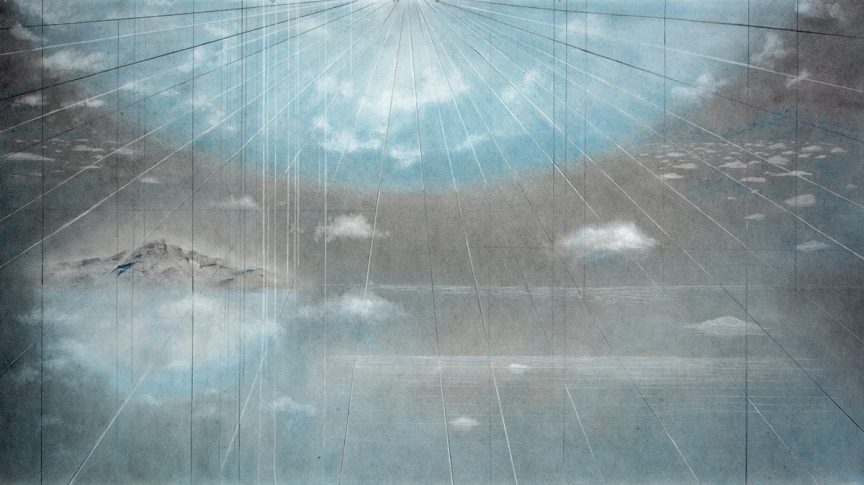Name: Holly Fay
Which came first in your life, the science or the art?
My curiosity about the natural physical world and my desire to make and create have been unified since childhood. As a youngster, I spent much time exploring the outdoors and collecting natural materials. For example, I would gather up all the varieties of leaves I could find, then arranged my collections into notebooks. Trips to the library were treasured; I would carry an armful of natural science books home to pore over the pictures and diagrams. By good fortune, the public library also housed an art gallery. Consequently, each library expedition included a visit to the art gallery. The pull towards visual art grew stronger as my understanding of art broadened, which led me to study art at university and build a professional art practice.
Full circle—in 2015, I exhibited my work in a solo exhibition with that same gallery housed in the public library I visited as a child.


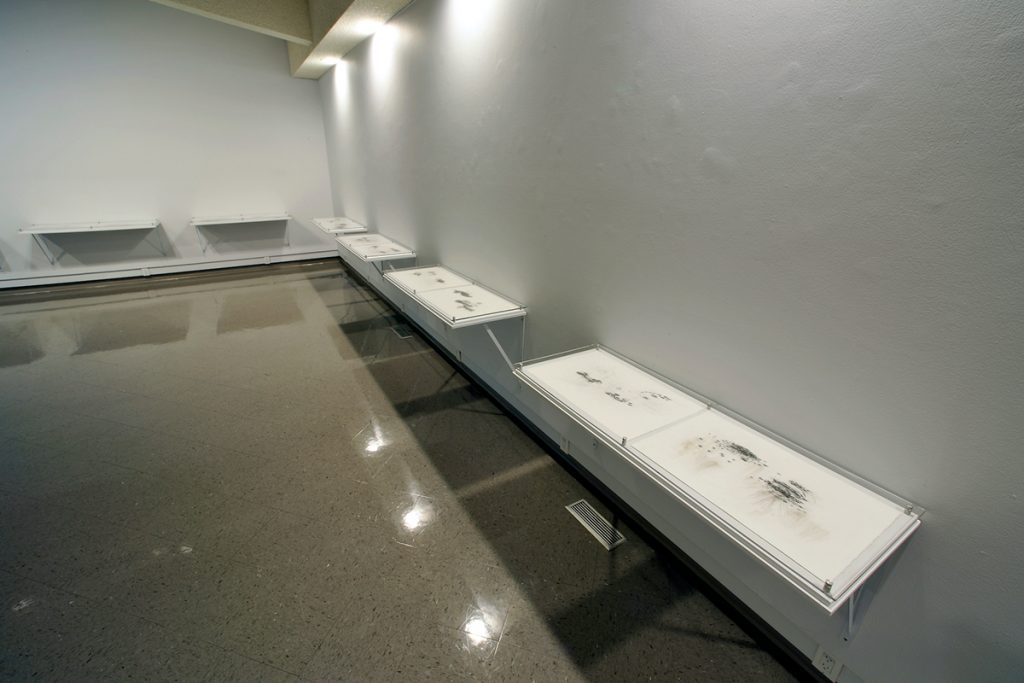
Which sciences relate to your art practice?
Ecology relates most to my overall practice, as my work is concerned with the interconnectivity and relationships between all living organisms and the physical environment. The larger cosmos also holds immense interest to me. Therefore, in some bodies of work, astronomy would also relate.
“my work is concerned with the interconnectivity and relationships between all living organisms and the physical environment.”
Holly Fay
What materials do you use to create your artworks?
Media and process are important vehicles to convey associations and build meaning in the work.
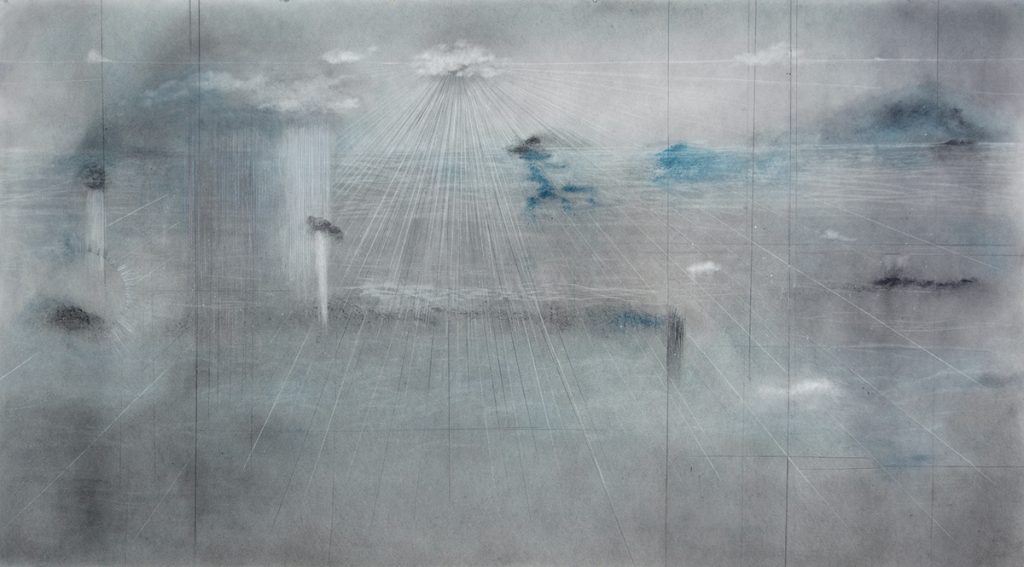

Over the last decade, I have almost exclusively worked on paper with graphite (the mineral form of carbon—found in earth and space and on which all life is based). I enjoy the immediacy of drawing and its association with exploration and recording. I also enjoy how the seemingly simple materials of graphite on paper yield endless visual and conceptual possibilities.
Artwork/Exhibition you are most proud of:
I am proud of my current project in progress: large-scale graphite drawings on paper. These drawings examine the forces, states, and forms of water, and also acknowledge the beauty and wonder of water. Water is the universal transport medium of life, performing essential and diverse roles. In these drawings, I work layers of graphite into the paper to depict forms that are void of hard or defined contours to suggest continual flux and fluidity. Linear marks in the picture plane suggest the multi-dimensional aspects of physical space and transitory qualities of water, energy, and movement. The drawing process is a means to visually conceptualize the wonder present throughout the underpinnings of the natural world. I am proud of the presence these works hold.

“These drawings examine the forces, states, and forms of water, and also acknowledge the beauty and wonder of water.”
Holly Fay
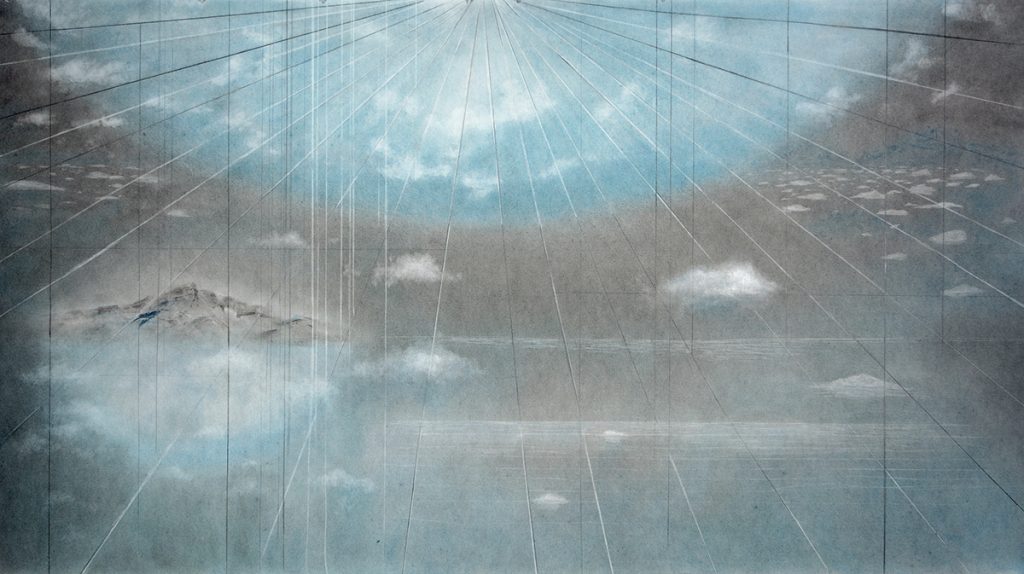
Another body of work I am proud of is Floating Worlds, which is a large series of works on paper. Especially gratifying to me was the installation of this work at the Dunlop Art Gallery in 2015 (the aforementioned gallery/exhibition). One of the largest works in the series, a composite oil painting, was presented in its entirety on the wall. Smaller drawings were displayed flat to be viewed from above, similar to viewing a book or maps on display. This work was concerned with the macrocosm and microcosm schema of ecological systems and focused on the repeating movements and structures of abiotic systems, such as air, water current, and clouds.
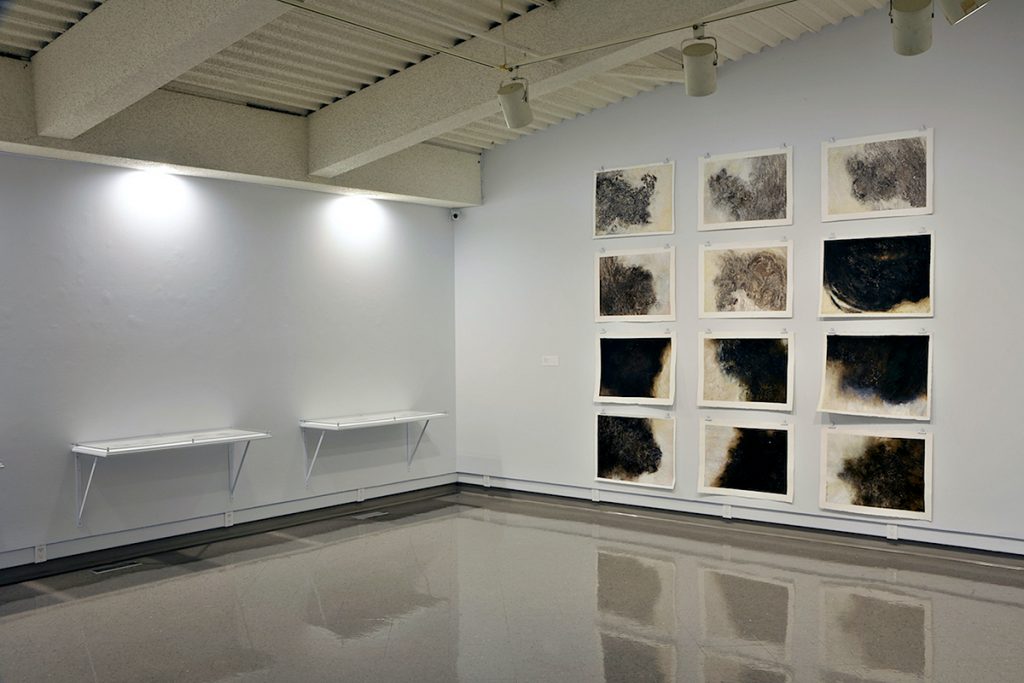
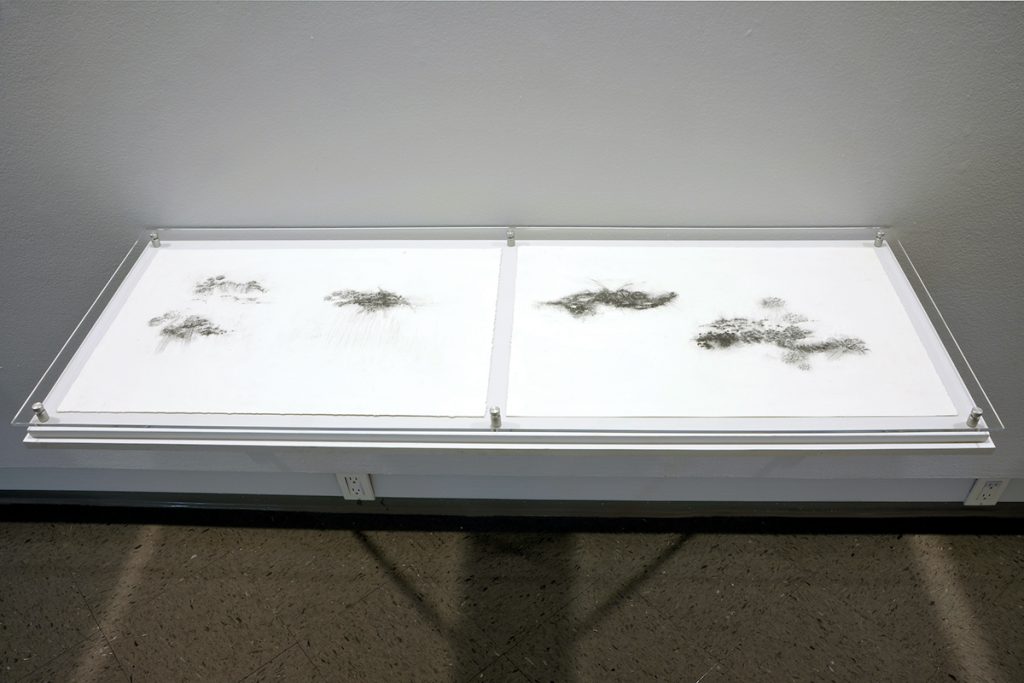
Which scientists and/or artists inspire and/or have influenced you?
Frequently, I return to DaVinci’s water drawings, both the scientific observations and the visualizations. DaVinci was obsessed with water, drawing images of its movement, flow, power, and beauty. DaVinci’s drawings, as well as mathematician Benoit Mandelbrot’s theory of roughness and self-similarity, informed my previous body of work. I have also gained inspiration from the work of ecologists Suzanne Simard and Robin Wall Kimmerer and artist Terry Winters. Most recently, I have been looking into artist Roni Horn’s seminal works focused on water to inform my research.
SciArt is an emerging term related to combining art and science. How would you define it?
The roles of the artist and scientist are similar in that both pose questions to seek understanding, to find new meaning, and to clarify connections. Creative thinking and imagination are essential in both science and art. The term SciArt applies when scientific methods and research inform artistic practices, when art initiates scientific questions, and when artistic methods provide a poignant visualization of scientific data and research.

“Creative thinking and imagination are essential in both science and art.”
Holly Fay

For more by Holly Fay, visit her website or Instagram.
Share this Post

